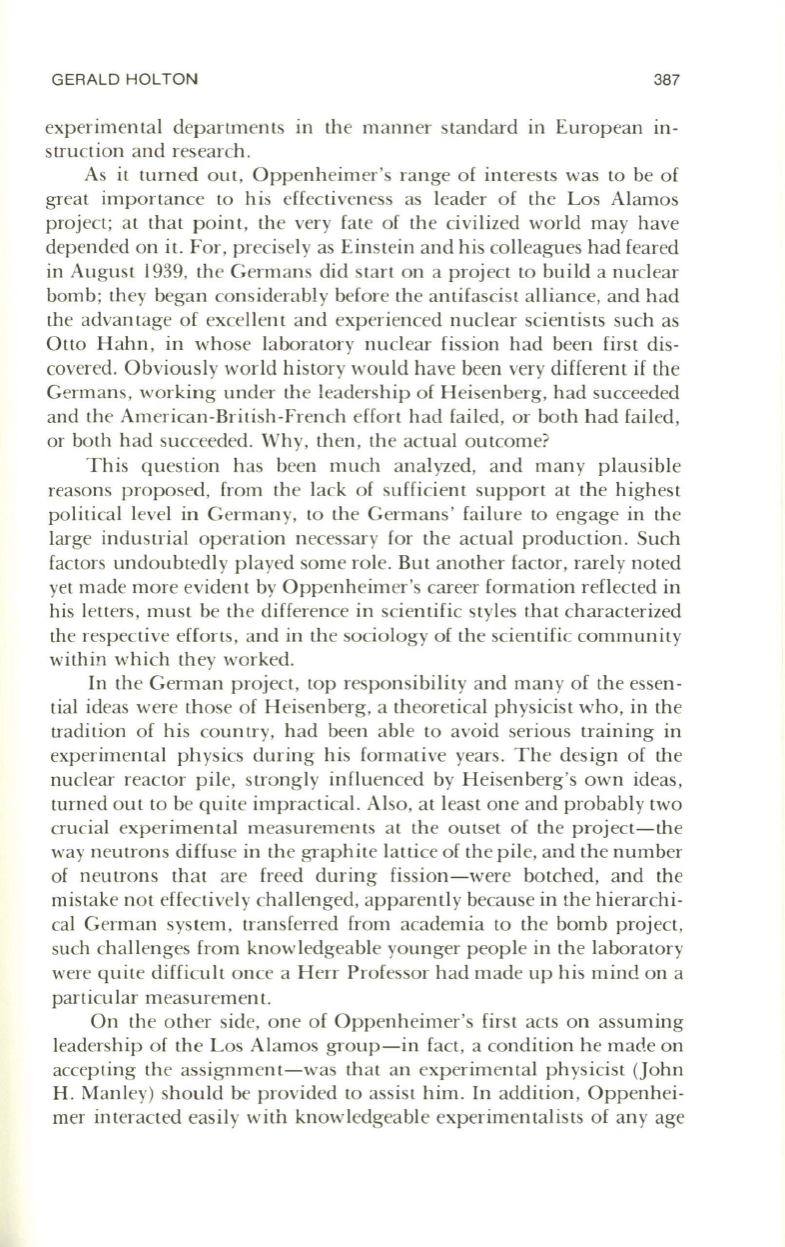
GERALD HOLTON
387
experimental departments
In
the manner standard in European
in–
struction and research.
As it turned out, Oppenheimer's range of interests was to be of
great importance to his effectiveness as leader of the Los Alamos
project; at that point, the very fate of the civilized world may have
depended on it. For, precisely as Einstein and his colleagues had feared
in August 1939, the Germans did start on a project to build a nuclear
bomb; they began considerably before the antifascist alliance, and had
the advantage of excellent and experienced nuclear scientists such as
Otto Hahn, in whose laboratory nuclear fission had been first dis–
covered. Obviously world history would have been very different if the
Germans, working under the leadership of Heisenberg, had succeeded
and the American-British-French effort had failed, or both had failed,
or both had succeeded. Why, then, the actual outcome?
This question has been much analyzed, and many plausible
reasons proposed, from the lack of sufficient support at the highest
political level in Germany, to the Germans' failure to engage in the
large industrial operation necessary for the actual production. Such
factors undoubtedly played some role. But another factor, rarely noted
yet made more evident by Oppenheimer's career formation reflected in
his letters, must be the difference in scientific styles that characterized
the respective efforts, and in the sociology of the scientific community
within which they worked.
In the German project, top responsibility and many of the essen–
tial ideas were those of Heisenberg, a theoretical physicist who, in the
tradition of his country, had been able
to
avoid serious training in
experimental physics during his formative years. The design of the
nuclear reactor pile, strongly influenced by Heisenberg'S own ideas,
turned out to be quite impractical. Also, at least one and probably two
crucial experimental measurements at the outset of the project-the
way neutrons diffuse in the graphite lattice of the pile, and the number
of neutrons that are freed during fission-were botched, and the
mistake not effectively challenged, apparently because in the hierarchi–
cal German system, transferred from academia to the bomb project,
such challenges from knowledgeable younger people in the laboratory
were quite difficult once a Herr Professor had made up his mind on a
particular measurement.
On the other side, one of Oppenheimer's first acts on assuming
leadership of the Los Alamos group-in fact, a condition he made on
accepting the assignment-was that an experimental physicist (John
H. Manley) should be provided to assist him. In addition, Oppenhei–
mer interacted easily with knowledgeable experimentalists of any age


